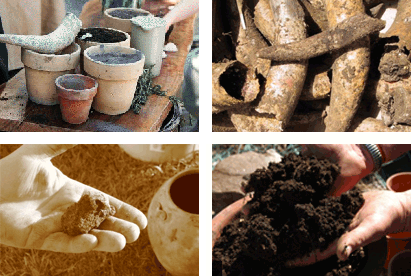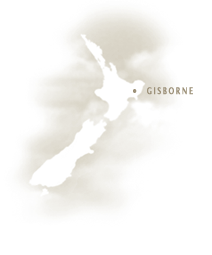THE MILLTON VINEYARD
1 : First vintage and a passion for organic winemaking
A HERD OF COWS MAY NOT BE THE FIRST THING TO COME TO MIND WHEN THINKING OF SERIOUSLY GOOD WINE. But cows play a vital part at The Millton Vineyard. So much so that Robert Parker, the influential American critic who used to ignore wines from this part of the world, rated their 2005 Clos de Ste Anne Chardonnay "94 points...the very best of its type...an outstanding wine". These wines can be very good. But they have another distinction; they are grown and made completely organically, under a regime known as bio-dynamics.
BUT THAT WAS IN THE FUTURE. In 1984 it was The Millton Vineyard's first vintage from vines planted beside the Te Arai River in Manutuke, near Gisborne in Poverty Bay. They were passionate about growing and making wine in a natural way. They had trained in France and Switzerland and loved the wines and old-world winemaking tradition. They wanted to bring their two passions together in a vineyard in New Zealand.
This was also my first vintage. I hadn't designed a wine label before. But word of mouth can have wonderful and far-reaching serendipity. At the time I was not long back in Auckland after working in the US and London. I was free-lancing for a publisher, who knew an architect, who's neighbour was a friend of a landscaper, who had clients in Gisborne, who were developing a vineyard...
IT WAS ORGANIC AND IT WAS THE EIGHTIES. From the outset, the Millton Vineyard's image and labels were to be stylish and confident - clearly reflecting Annie and James' approach. They wanted to grow and make premium wines that were to be completely organic. And they wanted do it with style.
The early eighties was a time when all sorts of cultural apron strings were being loosened, of optimism and exuberance in both design and wine. It was a natural response to pick up a brush and draw a logo with a lively hand. I made several water colour illustrations in the same spirit during the next few years.
The Te Arai River range carries an impression of the coastal cliffs at Young Nick's Head. Cyclone Bola - which wreaked havoc throughout Poverty Bay in 1988 - was also responsible for creating the first cabernet rosé. The rain-battered cabernet sauvignon made a beautiful blush wine. A later splash of blue and orange, an autumn vineyard under clear skies, was for a range of certified organic wines.
As a tribute to Annie, James planted a small parcel of chardonnay vines on a premium site high on a hillside. The Clos de ste. Anne label is not much changed 25 years later, and it is still one of my favourites.
WINE VARIETIES: CHENIN BLANC, STEINBERG MULLER THURGAU, SEMILLION, ROSÉ, CHARDONNAY AND SAUVIGNON BLANC.
BIO-DYNAMICS Is based on Rudolf Steiner's spiritual science and an understanding of how the moon and planets influence soil, plant and animal life. It involves growing grapes without herbicides, insecticides, systemic fungicides or soluble fertilisers. Instead, there is companion planting, and liquid manures and herbal preparations are applied to keep the soil in natural balance.

Thanks to The Millton Vineyard for source material.
Vineyard and historical images: The Millton Vineyard.
Bottle images: Ross Land; Bill Nichol.
Sound track:
Audiojungle.
HTML 5 video player:
Videojs.
The Biodynamic Farming and Gardening Association in New Zealand Inc
BioGro
-
© 2012 Mark Adams. All rights reserved. Mark Adams Brand Stories
